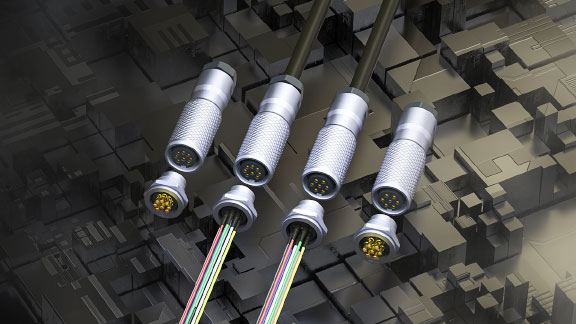Industrial connectors are electromechanical components used to connect wires, cables, and control boards of industrial equipment. With the continuous development of the manufacturing industry, the demand for industrial connectors in the market is showing a rapid growth trend. How can we ensure that industrial connectors can fully play a role in equipment? One of the key points is that the insertion and removal operations must follow the prescribed procedures to avoid human errors as much as possible.
(1) Before inserting industrial connectors, it is necessary to confirm whether the auxiliary positioning designs such as the code, interface shape, interface positioning keyway, positioning color code, locking pins and slots, positioning screws and screw holes of the plug and socket to be inserted correspond to each other, in order to avoid incorrect insertion.
(2) During the process of pushing or screwing in industrial connectors, the mating surface of the plug and socket should be parallel and aligned, and the cable or wire should be straightened before gently pushing or slowly screwing in the locking sleeve along the axis direction and locking it in place. If it is found that the two mating surfaces are skewed, misaligned, or feel tight beyond normal force or have any abnormal sensations, the operation should be stopped, pulled outward along the axis direction, and the condition should be checked. After the fault is eliminated, the plug should be reconnected. To avoid damaging the connector, special auxiliary tools can be used for plugging and unplugging.
(3) When tightening the tail cover of the plug or socket, the tail cover outlet cable or wire cannot rotate with it. When blind insertion, it is recommended to use lighting and visual equipment (such as micro cameras, endoscopes, and monitors) to monitor the blind insertion process. Perform blind insertion operation under conditions of no light and monitoring equipment. Use your fingers to feel the corresponding characteristics of the interface to be inserted, then insert it in place and lock it tightly.
(4) During the locking operation, if it occurs or is found that it cannot be locked properly, it should be promptly removed and checked. After checking for errors, it can be inserted and locked according to regulations. For the power connector of thick and hard cables, the cable should be fixed to prevent the power connector from being unable to be unplugged and damaged due to the weight of the cable itself. After the power connector is inserted and locked, the tail cover outlet cable should be kept in a natural extension state, and the starting point of cable bending should generally be more than 30mm away from the tail cover outlet. When bending, the internal bending radius of the cable should generally not be less than 4 times the outer diameter of the cable. When inserting and unplugging a power connector, it should be held by its body for insertion and removal, and should not be directly grasped by cables or wires for operation.
TXGA has multiple models of industrial connectors, sold directly from the original factory, with a complete range of models available for online procurement, starting from 1pc. Need a connector, click to enter the 【 Product Center 】 to purchase.
